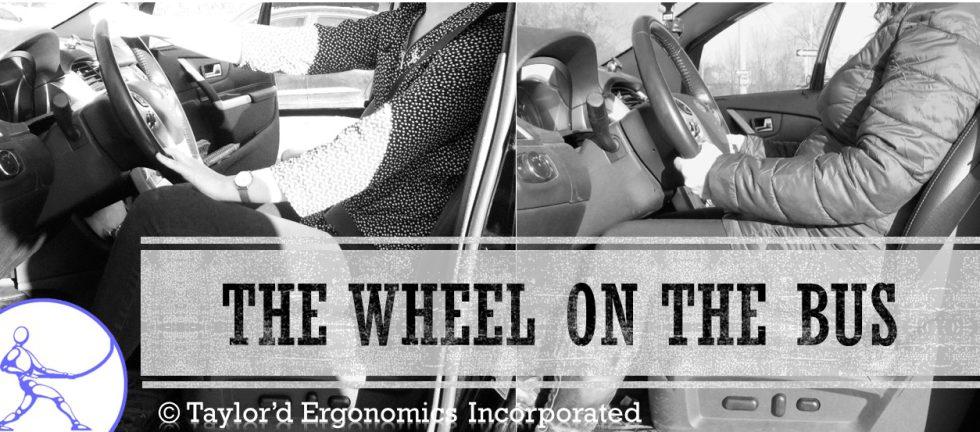We have worked with bus drivers extensively over the years, and it is surprising how a small adjustment can significantly improve their driving comfort. Bus seats typically offer more adjustability than a typical office chair, which means that if the driver takes the time to adjust it, the “ergonomics” of the workstation can be quite good.
In this article, I want to focus on the wheel in front of the driver, not the wheels under the bus. The next time you’re driving around town and you pull up beside a city bus, take a look at the driver’s posture. Some drivers sit up with the head balanced over the torso, hands on the close half of the wheel. Others will be slumped forward over the wheel, hands at 10 and 2, chin thrust forward. Who do you think is more comfortable?
Hand-over-hand steering
Hand-over-hand steering involves one hand traveling a half turn with the wheel, at which point the other hand crosses the first hand and continues to rotate the wheel. This method involves more upper body strength and can put a lot of strain on the shoulders, arms, and wrists. In a bus, which has a larger wheel than the vehicles that most of us drive, the driver must lean forward, away from the backrest, to grip the far side of the wheel. A driver who uses a “hand-over-hand” technique cannot get support from the backrest. Hand-over-hand steering also allows the driver to turn the bus while it’s moving faster, so passengers need to hold on. (The photos above show two of our ergonomists demonstrating hand positions in a car; we don’t have any shareable photos of a bus, but a bus steering wheel is much larger and typically more horizontal than shown above.)
Shuffle steering
Shuffle steering, also known as “push-pull” or “hand-to-hand” steering, involves passing the wheel between hands. When both hands are on the wheel, one hand pushes and the other hand pulls to turn the wheel. The hands are typically kept on the close side of the wheel, at “8:00 and 4:00” or “9:00 and 3:00”. A driver who is sitting upright and passing the wheel from hand-to-hand using a “shuffle” technique can get the benefit of the backrest and probably gives the riders a smoother ride. The shuffle technique requires the driver to slow down before turning, so the corners tend to be less dramatic for the passengers. (You know how I love to look at the interaction between ergonomics and quality….better ergo, better bus ride!)
When our ergonomists do bus driver assessments, we spend time in the bus with the driver, adjusting the many features of the driver’s compartment. We also take a ride-along to see how the driver moves in the “workstation”. How does the foot move between the accelerator and brake? How are the neck and back supported? What does the driver do during pauses or breaks from driving? What type of grip does the driver use on the wheel? A driver assessment is equal parts measurement, adjustment, observation, and coaching (followed by a chunk of time for report-writing, of course).
Need more information about driver ergo sit-fit assessments? Contact info@taylordergo.com.


